Latin America: a carnival of exotic fruit
For those people visiting a Latin American “farmers’ market” for the first time, the fruit section can be a new and exotic experience for all the senses. A carnival of intense colors and capricious shapes unfolds before your eyes, while the aromas and textures are simply astounding.
 In the touting of the sellers who try to attract your attention, you will hear unknown and original names, ones like chirimoya, tomate de árbol, naranjilla, guanábana, maracuyá, pitajaya, guayaba, guaba, zapote and uvilla. While these can be difficult to pronounce at first, when you try some of these exotic fruits, chances are you’ll never forget the name of what you just enjoyed.
In South America, the variety and quantity of fruits that are produced throughout the year, which allow these to be affordable and eaten daily. The opposite occurs in European countries, where – because of the climate – locally grown fruits are available for only one season; the rest of the year they have to be imported. This situation not only lowers the quality of the fruit but also increases their prices to above what makes them staples.
The fruits of South America are beginning to break down borders and position themselves in these and other markets. In Ecuador, the export of fruits such as pineapples and bananas – for which this country is already well known around the world – allows Ecuador to maintain its position among the top exotic fruit exporting countries on the planet.
One fact that confirms this trend is that the export of South American fruits and vegetables to Europe increased by 2% in volume and 10% in value from 2014 to 2015. This totaled 74 million tones and no less than 6.4 billion euros, respectively (This data is from the Spanish Federation of Associations of Producers, Exporters of Fruits, Vegetables, Flowers and Living Plants.)
The “globalization” of fruit
What some call the “globalization of fruit” is going hand in hand with trends toward more healthy food, varied diets, flavor innovations, and even migratory movements (since when people migrate, they bring with them their customs, their ways of cooking, and new flavors, which are all introduced and integrated into culinary habits of their destinations).
Today, avocados, pineapples, papayas, pitahayas, mangoes, dates and other varieties of Latin American fruits are transported in refrigerated containers as far away as Europe and Asia, where these are placed on supermarket shelves and on the dining room tables of local families. In specialized stores in Europe and North America, for example, you can find fruits such as “tree tomatoes” (also known as tamarillos), mandarins, pitahaya, dragon fruit, guava, uvillas, guanábanas, naranjillas or “lulos,” passion fruit and others.
Here, we describe some of the exotic fruits that you can find and sample when you travel to Latin America – emphasizing Ecuadorian fruits so as to give you one more reason to visit this stunning Latin American country that is touristically best known for its Galapagos Islands, the Amazonian rainforest and the country’s snow-capped volcanoes of the Andean highlands.
1. Chirimoya
Sweet and juicy, cone- or heart-shaped, this fruit has a green skin and thick scales. Inside its bark is the edible flesh, which is white, along with many dark gray seeds that are not edible. The fruit is grown mainly in the Andean valleys of Ecuador at an altitude of 1,200 – 2,500 meters above sea level. Near Quito, this fruit is cultivated almost all year round in the Guayllabamba Valley, where it has become a tradition for travelers to stop and buy them. Liked by Ecuadorians and foreigners alike, this fruit has been exported to Anglo-Saxon countries since the 19th century.
In the touting of the sellers who try to attract your attention, you will hear unknown and original names, ones like chirimoya, tomate de árbol, naranjilla, guanábana, maracuyá, pitajaya, guayaba, guaba, zapote and uvilla. While these can be difficult to pronounce at first, when you try some of these exotic fruits, chances are you’ll never forget the name of what you just enjoyed.
In South America, the variety and quantity of fruits that are produced throughout the year, which allow these to be affordable and eaten daily. The opposite occurs in European countries, where – because of the climate – locally grown fruits are available for only one season; the rest of the year they have to be imported. This situation not only lowers the quality of the fruit but also increases their prices to above what makes them staples.
The fruits of South America are beginning to break down borders and position themselves in these and other markets. In Ecuador, the export of fruits such as pineapples and bananas – for which this country is already well known around the world – allows Ecuador to maintain its position among the top exotic fruit exporting countries on the planet.
One fact that confirms this trend is that the export of South American fruits and vegetables to Europe increased by 2% in volume and 10% in value from 2014 to 2015. This totaled 74 million tones and no less than 6.4 billion euros, respectively (This data is from the Spanish Federation of Associations of Producers, Exporters of Fruits, Vegetables, Flowers and Living Plants.)
The “globalization” of fruit
What some call the “globalization of fruit” is going hand in hand with trends toward more healthy food, varied diets, flavor innovations, and even migratory movements (since when people migrate, they bring with them their customs, their ways of cooking, and new flavors, which are all introduced and integrated into culinary habits of their destinations).
Today, avocados, pineapples, papayas, pitahayas, mangoes, dates and other varieties of Latin American fruits are transported in refrigerated containers as far away as Europe and Asia, where these are placed on supermarket shelves and on the dining room tables of local families. In specialized stores in Europe and North America, for example, you can find fruits such as “tree tomatoes” (also known as tamarillos), mandarins, pitahaya, dragon fruit, guava, uvillas, guanábanas, naranjillas or “lulos,” passion fruit and others.
Here, we describe some of the exotic fruits that you can find and sample when you travel to Latin America – emphasizing Ecuadorian fruits so as to give you one more reason to visit this stunning Latin American country that is touristically best known for its Galapagos Islands, the Amazonian rainforest and the country’s snow-capped volcanoes of the Andean highlands.
1. Chirimoya
Sweet and juicy, cone- or heart-shaped, this fruit has a green skin and thick scales. Inside its bark is the edible flesh, which is white, along with many dark gray seeds that are not edible. The fruit is grown mainly in the Andean valleys of Ecuador at an altitude of 1,200 – 2,500 meters above sea level. Near Quito, this fruit is cultivated almost all year round in the Guayllabamba Valley, where it has become a tradition for travelers to stop and buy them. Liked by Ecuadorians and foreigners alike, this fruit has been exported to Anglo-Saxon countries since the 19th century.
 2. Naranjilla
This small fruit has a somewhat scratchy skin and an orange-yellow color when it’s mature. As it can be somewhat acidic, it is consumed mainly in mixed juices, jams and ice cream. A naranjilla “milkshake” (blended with milk or yogurt) is the ideal complement to a good Ecuadorian breakfast or to go along with delicious and typical cassava bread. The fruit grows on both sides of the Andean mountain range at an altitude of between 1,500 and 2,300 meters above sea level.
2. Naranjilla
This small fruit has a somewhat scratchy skin and an orange-yellow color when it’s mature. As it can be somewhat acidic, it is consumed mainly in mixed juices, jams and ice cream. A naranjilla “milkshake” (blended with milk or yogurt) is the ideal complement to a good Ecuadorian breakfast or to go along with delicious and typical cassava bread. The fruit grows on both sides of the Andean mountain range at an altitude of between 1,500 and 2,300 meters above sea level.
 3. Capuli:
This small of dark fruit grows in the Andes at altitudes of up to 2,200 meters above sea level, and on trees of up to eight meters high – especially in the Ecuadorian highlands. These trees take four years to start bearing fruit. The fruit can be compared to cherries; in fact, they are also known as “wild black cherries.” They are eaten directly or prepared in jams or sweets. In Ecuador, a home-produced variety of wine from this fruit is becoming more popular.
3. Capuli:
This small of dark fruit grows in the Andes at altitudes of up to 2,200 meters above sea level, and on trees of up to eight meters high – especially in the Ecuadorian highlands. These trees take four years to start bearing fruit. The fruit can be compared to cherries; in fact, they are also known as “wild black cherries.” They are eaten directly or prepared in jams or sweets. In Ecuador, a home-produced variety of wine from this fruit is becoming more popular.
 4. Pineapple or “ananás”
This tropical fruit is one of the best known around the world. Although it can be relatively expensive, it is one of the most popular fruits in the exotic fruit market. Because of its structure, it’s easy to export; and due to its versatility, it can be eaten raw, cooked, made into juice or preserved. It lasts longer than many other fruits, and its characteristic taste has conquered the most demanding palates on the planet. Many nutritional and even medicinal properties are attributed to the pineapple, which is also used in weight-loose diets.
4. Pineapple or “ananás”
This tropical fruit is one of the best known around the world. Although it can be relatively expensive, it is one of the most popular fruits in the exotic fruit market. Because of its structure, it’s easy to export; and due to its versatility, it can be eaten raw, cooked, made into juice or preserved. It lasts longer than many other fruits, and its characteristic taste has conquered the most demanding palates on the planet. Many nutritional and even medicinal properties are attributed to the pineapple, which is also used in weight-loose diets.
 5. Guaba
Some people call this the “candy fruit” because small, sweet and soft kernels can be found inside it. Its flesh is velvety, and its taste …delicious. This Andean fruit grows in the wild at 2,800 meters above sea level. Guaba has a green skin and has a large elongated pod, which is opened like green peas: splitting it down the middle to reveal its small kernels.
5. Guaba
Some people call this the “candy fruit” because small, sweet and soft kernels can be found inside it. Its flesh is velvety, and its taste …delicious. This Andean fruit grows in the wild at 2,800 meters above sea level. Guaba has a green skin and has a large elongated pod, which is opened like green peas: splitting it down the middle to reveal its small kernels.
 6. Papaya
This tropical fruit originated in Central America, with a host of health benefits attributed to it. While its flesh is orange and its skin yellowish-green, it has small black seeds that are discarded when making juice, though these can be eaten directly. Papaya is grown in tropical climates, and its smaller variety – even sweeter and possessing a more intense orange color – is known as the “Hawaiian papaya”.
6. Papaya
This tropical fruit originated in Central America, with a host of health benefits attributed to it. While its flesh is orange and its skin yellowish-green, it has small black seeds that are discarded when making juice, though these can be eaten directly. Papaya is grown in tropical climates, and its smaller variety – even sweeter and possessing a more intense orange color – is known as the “Hawaiian papaya”.
 7. Babaco
This soft fruit, a cousin of the papaya, grows in cooler climates, but only in full sunlight. Native to northeastern South America (probably from Ecuador), Babaco is juicy, a little acidic and low in sugar – making it perfect for sweets, juice, and jams.
7. Babaco
This soft fruit, a cousin of the papaya, grows in cooler climates, but only in full sunlight. Native to northeastern South America (probably from Ecuador), Babaco is juicy, a little acidic and low in sugar – making it perfect for sweets, juice, and jams.
 8. Avocado
Also known as “palta,” the avocado is a fruit of Mesoamerican origin that the Spaniards baptized as the “pear of the Indies.” Though some people attribute aphrodisiac properties to it, what’s sure is that the avocado is high in vitamin E, potassium and vegetable oils. In addition, contrary to what’s commonly believed, it helps to control cholesterol levels when eaten in moderation.
8. Avocado
Also known as “palta,” the avocado is a fruit of Mesoamerican origin that the Spaniards baptized as the “pear of the Indies.” Though some people attribute aphrodisiac properties to it, what’s sure is that the avocado is high in vitamin E, potassium and vegetable oils. In addition, contrary to what’s commonly believed, it helps to control cholesterol levels when eaten in moderation.
 9. Pitahaya (“dragon fruit”)
Known for ages by indigenous peoples, but “discovered” centuries ago by Spanish conquistadors in Mexico, Colombia, Central America and the Antilles, pitahaya continues to be grown, especially in South and Central America. It is a fruit that comes from a species of cactus and has a great variety of nutrients, in addition to a sweet and delicate flavor. Due to its high demand in European, American and Asian countries, combined with its restricted and seasonal supply, Pitahaya goes for a high price in the marketplace.
9. Pitahaya (“dragon fruit”)
Known for ages by indigenous peoples, but “discovered” centuries ago by Spanish conquistadors in Mexico, Colombia, Central America and the Antilles, pitahaya continues to be grown, especially in South and Central America. It is a fruit that comes from a species of cactus and has a great variety of nutrients, in addition to a sweet and delicate flavor. Due to its high demand in European, American and Asian countries, combined with its restricted and seasonal supply, Pitahaya goes for a high price in the marketplace.
 Known for ages by indigenous peoples, but “discovered” centuries ago by Spanish conquistadors in Mexico, Colombia, Central America and the Antilles, Pitahaya continues to be grown, especially in South and Central America. It is a fruit that comes from a species of cactus and has a great variety of nutrients, in addition to a sweet and delicate flavor. Because of its high demand in European, American and Asian countries, and its restricted and seasonal supply, Pitahaya goes for a high price in the marketplace.
10. Coconut
Along with the many nutritive and medicinal properties attributed to its flesh, juice, and oil, this tropical fruit has a fresh and pleasant taste that is the basis for many types of food products. This is why coconuts are an increasingly important Latin America export to Europe and Asia (especially coconut water, in the latter case).
Known for ages by indigenous peoples, but “discovered” centuries ago by Spanish conquistadors in Mexico, Colombia, Central America and the Antilles, Pitahaya continues to be grown, especially in South and Central America. It is a fruit that comes from a species of cactus and has a great variety of nutrients, in addition to a sweet and delicate flavor. Because of its high demand in European, American and Asian countries, and its restricted and seasonal supply, Pitahaya goes for a high price in the marketplace.
10. Coconut
Along with the many nutritive and medicinal properties attributed to its flesh, juice, and oil, this tropical fruit has a fresh and pleasant taste that is the basis for many types of food products. This is why coconuts are an increasingly important Latin America export to Europe and Asia (especially coconut water, in the latter case).
 With all these delicacies, we urge you to visit South America, where this carnival of exotic fruit awaits!
Alfonso Tandazo is President and CEO at Surtrek Tour Operator.
If you would like to be a guest blogger on A Luxury Travel Blog in order to raise your profile, please contact us.
With all these delicacies, we urge you to visit South America, where this carnival of exotic fruit awaits!
Alfonso Tandazo is President and CEO at Surtrek Tour Operator.
If you would like to be a guest blogger on A Luxury Travel Blog in order to raise your profile, please contact us.
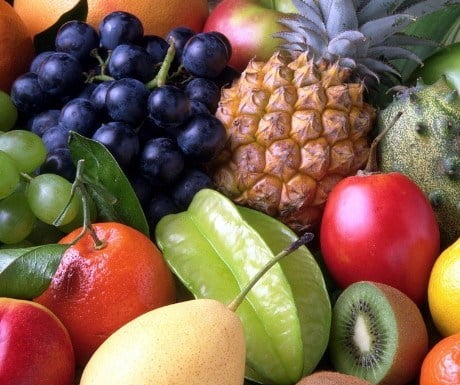 In the touting of the sellers who try to attract your attention, you will hear unknown and original names, ones like chirimoya, tomate de árbol, naranjilla, guanábana, maracuyá, pitajaya, guayaba, guaba, zapote and uvilla. While these can be difficult to pronounce at first, when you try some of these exotic fruits, chances are you’ll never forget the name of what you just enjoyed.
In South America, the variety and quantity of fruits that are produced throughout the year, which allow these to be affordable and eaten daily. The opposite occurs in European countries, where – because of the climate – locally grown fruits are available for only one season; the rest of the year they have to be imported. This situation not only lowers the quality of the fruit but also increases their prices to above what makes them staples.
The fruits of South America are beginning to break down borders and position themselves in these and other markets. In Ecuador, the export of fruits such as pineapples and bananas – for which this country is already well known around the world – allows Ecuador to maintain its position among the top exotic fruit exporting countries on the planet.
One fact that confirms this trend is that the export of South American fruits and vegetables to Europe increased by 2% in volume and 10% in value from 2014 to 2015. This totaled 74 million tones and no less than 6.4 billion euros, respectively (This data is from the Spanish Federation of Associations of Producers, Exporters of Fruits, Vegetables, Flowers and Living Plants.)
The “globalization” of fruit
What some call the “globalization of fruit” is going hand in hand with trends toward more healthy food, varied diets, flavor innovations, and even migratory movements (since when people migrate, they bring with them their customs, their ways of cooking, and new flavors, which are all introduced and integrated into culinary habits of their destinations).
Today, avocados, pineapples, papayas, pitahayas, mangoes, dates and other varieties of Latin American fruits are transported in refrigerated containers as far away as Europe and Asia, where these are placed on supermarket shelves and on the dining room tables of local families. In specialized stores in Europe and North America, for example, you can find fruits such as “tree tomatoes” (also known as tamarillos), mandarins, pitahaya, dragon fruit, guava, uvillas, guanábanas, naranjillas or “lulos,” passion fruit and others.
Here, we describe some of the exotic fruits that you can find and sample when you travel to Latin America – emphasizing Ecuadorian fruits so as to give you one more reason to visit this stunning Latin American country that is touristically best known for its Galapagos Islands, the Amazonian rainforest and the country’s snow-capped volcanoes of the Andean highlands.
1. Chirimoya
Sweet and juicy, cone- or heart-shaped, this fruit has a green skin and thick scales. Inside its bark is the edible flesh, which is white, along with many dark gray seeds that are not edible. The fruit is grown mainly in the Andean valleys of Ecuador at an altitude of 1,200 – 2,500 meters above sea level. Near Quito, this fruit is cultivated almost all year round in the Guayllabamba Valley, where it has become a tradition for travelers to stop and buy them. Liked by Ecuadorians and foreigners alike, this fruit has been exported to Anglo-Saxon countries since the 19th century.
In the touting of the sellers who try to attract your attention, you will hear unknown and original names, ones like chirimoya, tomate de árbol, naranjilla, guanábana, maracuyá, pitajaya, guayaba, guaba, zapote and uvilla. While these can be difficult to pronounce at first, when you try some of these exotic fruits, chances are you’ll never forget the name of what you just enjoyed.
In South America, the variety and quantity of fruits that are produced throughout the year, which allow these to be affordable and eaten daily. The opposite occurs in European countries, where – because of the climate – locally grown fruits are available for only one season; the rest of the year they have to be imported. This situation not only lowers the quality of the fruit but also increases their prices to above what makes them staples.
The fruits of South America are beginning to break down borders and position themselves in these and other markets. In Ecuador, the export of fruits such as pineapples and bananas – for which this country is already well known around the world – allows Ecuador to maintain its position among the top exotic fruit exporting countries on the planet.
One fact that confirms this trend is that the export of South American fruits and vegetables to Europe increased by 2% in volume and 10% in value from 2014 to 2015. This totaled 74 million tones and no less than 6.4 billion euros, respectively (This data is from the Spanish Federation of Associations of Producers, Exporters of Fruits, Vegetables, Flowers and Living Plants.)
The “globalization” of fruit
What some call the “globalization of fruit” is going hand in hand with trends toward more healthy food, varied diets, flavor innovations, and even migratory movements (since when people migrate, they bring with them their customs, their ways of cooking, and new flavors, which are all introduced and integrated into culinary habits of their destinations).
Today, avocados, pineapples, papayas, pitahayas, mangoes, dates and other varieties of Latin American fruits are transported in refrigerated containers as far away as Europe and Asia, where these are placed on supermarket shelves and on the dining room tables of local families. In specialized stores in Europe and North America, for example, you can find fruits such as “tree tomatoes” (also known as tamarillos), mandarins, pitahaya, dragon fruit, guava, uvillas, guanábanas, naranjillas or “lulos,” passion fruit and others.
Here, we describe some of the exotic fruits that you can find and sample when you travel to Latin America – emphasizing Ecuadorian fruits so as to give you one more reason to visit this stunning Latin American country that is touristically best known for its Galapagos Islands, the Amazonian rainforest and the country’s snow-capped volcanoes of the Andean highlands.
1. Chirimoya
Sweet and juicy, cone- or heart-shaped, this fruit has a green skin and thick scales. Inside its bark is the edible flesh, which is white, along with many dark gray seeds that are not edible. The fruit is grown mainly in the Andean valleys of Ecuador at an altitude of 1,200 – 2,500 meters above sea level. Near Quito, this fruit is cultivated almost all year round in the Guayllabamba Valley, where it has become a tradition for travelers to stop and buy them. Liked by Ecuadorians and foreigners alike, this fruit has been exported to Anglo-Saxon countries since the 19th century.
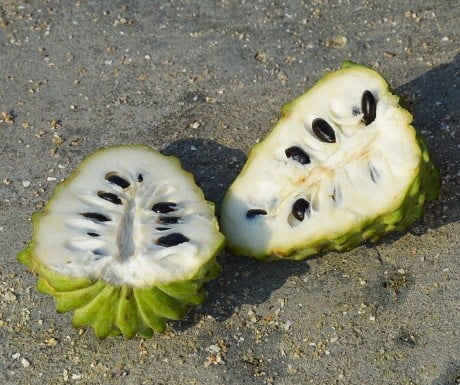 2. Naranjilla
This small fruit has a somewhat scratchy skin and an orange-yellow color when it’s mature. As it can be somewhat acidic, it is consumed mainly in mixed juices, jams and ice cream. A naranjilla “milkshake” (blended with milk or yogurt) is the ideal complement to a good Ecuadorian breakfast or to go along with delicious and typical cassava bread. The fruit grows on both sides of the Andean mountain range at an altitude of between 1,500 and 2,300 meters above sea level.
2. Naranjilla
This small fruit has a somewhat scratchy skin and an orange-yellow color when it’s mature. As it can be somewhat acidic, it is consumed mainly in mixed juices, jams and ice cream. A naranjilla “milkshake” (blended with milk or yogurt) is the ideal complement to a good Ecuadorian breakfast or to go along with delicious and typical cassava bread. The fruit grows on both sides of the Andean mountain range at an altitude of between 1,500 and 2,300 meters above sea level.
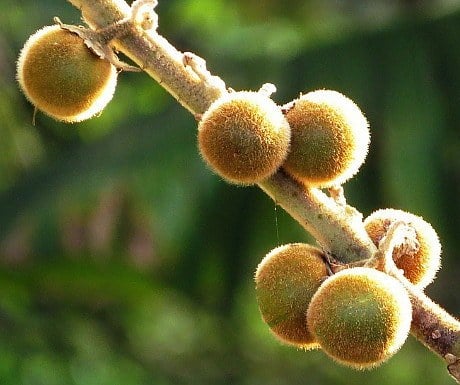 3. Capuli:
This small of dark fruit grows in the Andes at altitudes of up to 2,200 meters above sea level, and on trees of up to eight meters high – especially in the Ecuadorian highlands. These trees take four years to start bearing fruit. The fruit can be compared to cherries; in fact, they are also known as “wild black cherries.” They are eaten directly or prepared in jams or sweets. In Ecuador, a home-produced variety of wine from this fruit is becoming more popular.
3. Capuli:
This small of dark fruit grows in the Andes at altitudes of up to 2,200 meters above sea level, and on trees of up to eight meters high – especially in the Ecuadorian highlands. These trees take four years to start bearing fruit. The fruit can be compared to cherries; in fact, they are also known as “wild black cherries.” They are eaten directly or prepared in jams or sweets. In Ecuador, a home-produced variety of wine from this fruit is becoming more popular.
 4. Pineapple or “ananás”
This tropical fruit is one of the best known around the world. Although it can be relatively expensive, it is one of the most popular fruits in the exotic fruit market. Because of its structure, it’s easy to export; and due to its versatility, it can be eaten raw, cooked, made into juice or preserved. It lasts longer than many other fruits, and its characteristic taste has conquered the most demanding palates on the planet. Many nutritional and even medicinal properties are attributed to the pineapple, which is also used in weight-loose diets.
4. Pineapple or “ananás”
This tropical fruit is one of the best known around the world. Although it can be relatively expensive, it is one of the most popular fruits in the exotic fruit market. Because of its structure, it’s easy to export; and due to its versatility, it can be eaten raw, cooked, made into juice or preserved. It lasts longer than many other fruits, and its characteristic taste has conquered the most demanding palates on the planet. Many nutritional and even medicinal properties are attributed to the pineapple, which is also used in weight-loose diets.
 5. Guaba
Some people call this the “candy fruit” because small, sweet and soft kernels can be found inside it. Its flesh is velvety, and its taste …delicious. This Andean fruit grows in the wild at 2,800 meters above sea level. Guaba has a green skin and has a large elongated pod, which is opened like green peas: splitting it down the middle to reveal its small kernels.
5. Guaba
Some people call this the “candy fruit” because small, sweet and soft kernels can be found inside it. Its flesh is velvety, and its taste …delicious. This Andean fruit grows in the wild at 2,800 meters above sea level. Guaba has a green skin and has a large elongated pod, which is opened like green peas: splitting it down the middle to reveal its small kernels.
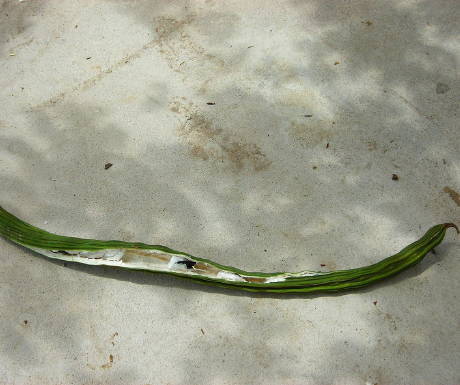 6. Papaya
This tropical fruit originated in Central America, with a host of health benefits attributed to it. While its flesh is orange and its skin yellowish-green, it has small black seeds that are discarded when making juice, though these can be eaten directly. Papaya is grown in tropical climates, and its smaller variety – even sweeter and possessing a more intense orange color – is known as the “Hawaiian papaya”.
6. Papaya
This tropical fruit originated in Central America, with a host of health benefits attributed to it. While its flesh is orange and its skin yellowish-green, it has small black seeds that are discarded when making juice, though these can be eaten directly. Papaya is grown in tropical climates, and its smaller variety – even sweeter and possessing a more intense orange color – is known as the “Hawaiian papaya”.
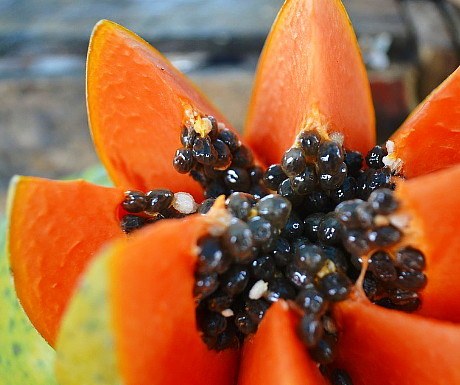 7. Babaco
This soft fruit, a cousin of the papaya, grows in cooler climates, but only in full sunlight. Native to northeastern South America (probably from Ecuador), Babaco is juicy, a little acidic and low in sugar – making it perfect for sweets, juice, and jams.
7. Babaco
This soft fruit, a cousin of the papaya, grows in cooler climates, but only in full sunlight. Native to northeastern South America (probably from Ecuador), Babaco is juicy, a little acidic and low in sugar – making it perfect for sweets, juice, and jams.
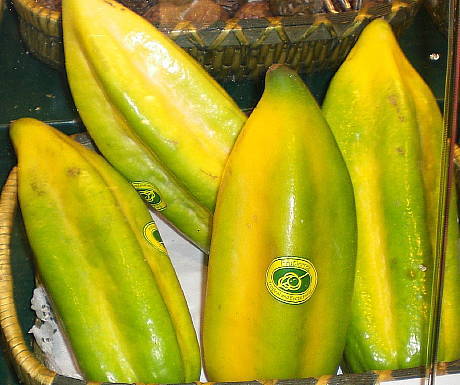 8. Avocado
Also known as “palta,” the avocado is a fruit of Mesoamerican origin that the Spaniards baptized as the “pear of the Indies.” Though some people attribute aphrodisiac properties to it, what’s sure is that the avocado is high in vitamin E, potassium and vegetable oils. In addition, contrary to what’s commonly believed, it helps to control cholesterol levels when eaten in moderation.
8. Avocado
Also known as “palta,” the avocado is a fruit of Mesoamerican origin that the Spaniards baptized as the “pear of the Indies.” Though some people attribute aphrodisiac properties to it, what’s sure is that the avocado is high in vitamin E, potassium and vegetable oils. In addition, contrary to what’s commonly believed, it helps to control cholesterol levels when eaten in moderation.
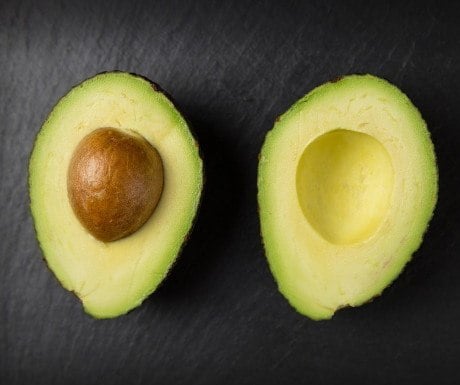 9. Pitahaya (“dragon fruit”)
Known for ages by indigenous peoples, but “discovered” centuries ago by Spanish conquistadors in Mexico, Colombia, Central America and the Antilles, pitahaya continues to be grown, especially in South and Central America. It is a fruit that comes from a species of cactus and has a great variety of nutrients, in addition to a sweet and delicate flavor. Due to its high demand in European, American and Asian countries, combined with its restricted and seasonal supply, Pitahaya goes for a high price in the marketplace.
9. Pitahaya (“dragon fruit”)
Known for ages by indigenous peoples, but “discovered” centuries ago by Spanish conquistadors in Mexico, Colombia, Central America and the Antilles, pitahaya continues to be grown, especially in South and Central America. It is a fruit that comes from a species of cactus and has a great variety of nutrients, in addition to a sweet and delicate flavor. Due to its high demand in European, American and Asian countries, combined with its restricted and seasonal supply, Pitahaya goes for a high price in the marketplace.
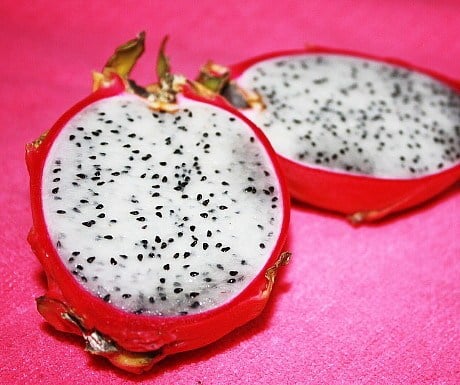 Known for ages by indigenous peoples, but “discovered” centuries ago by Spanish conquistadors in Mexico, Colombia, Central America and the Antilles, Pitahaya continues to be grown, especially in South and Central America. It is a fruit that comes from a species of cactus and has a great variety of nutrients, in addition to a sweet and delicate flavor. Because of its high demand in European, American and Asian countries, and its restricted and seasonal supply, Pitahaya goes for a high price in the marketplace.
10. Coconut
Along with the many nutritive and medicinal properties attributed to its flesh, juice, and oil, this tropical fruit has a fresh and pleasant taste that is the basis for many types of food products. This is why coconuts are an increasingly important Latin America export to Europe and Asia (especially coconut water, in the latter case).
Known for ages by indigenous peoples, but “discovered” centuries ago by Spanish conquistadors in Mexico, Colombia, Central America and the Antilles, Pitahaya continues to be grown, especially in South and Central America. It is a fruit that comes from a species of cactus and has a great variety of nutrients, in addition to a sweet and delicate flavor. Because of its high demand in European, American and Asian countries, and its restricted and seasonal supply, Pitahaya goes for a high price in the marketplace.
10. Coconut
Along with the many nutritive and medicinal properties attributed to its flesh, juice, and oil, this tropical fruit has a fresh and pleasant taste that is the basis for many types of food products. This is why coconuts are an increasingly important Latin America export to Europe and Asia (especially coconut water, in the latter case).
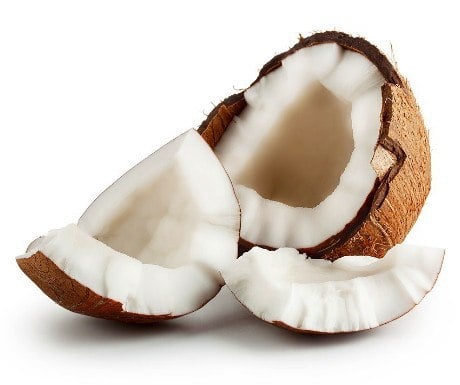 With all these delicacies, we urge you to visit South America, where this carnival of exotic fruit awaits!
Alfonso Tandazo is President and CEO at Surtrek Tour Operator.
If you would like to be a guest blogger on A Luxury Travel Blog in order to raise your profile, please contact us.
With all these delicacies, we urge you to visit South America, where this carnival of exotic fruit awaits!
Alfonso Tandazo is President and CEO at Surtrek Tour Operator.
If you would like to be a guest blogger on A Luxury Travel Blog in order to raise your profile, please contact us.Did you enjoy this article?
Receive similar content direct to your inbox.



Your post reminded me of my trips to South America and the amazing fruit juices I used to buy in the local markets. It was really hard to pick a fruit combination for them as I didn’t know what they were or how they tasted. But every time I got a delicious drink. I first met the dragon fruit in Asia and fell in love with its sweet taste. Papaya is also one of my favorites, especially combined with pineapple. :)
My mother makes delicious fruit salad, and being south african we know which fruit tastes best. Hehe. Sadly though, I am allergic to pineapples. But the other fruit you mentioned here look and sound great! Some new ones to me too!
Whoa. I didn’t know these fruits existed. I would love to taste the exotic fruits. I am surprised to say that they call pineapples as ‘ananas’ in South America as well. I though it is an Indian name. Babaco sounds really cool.
I tried something similar to naranjila before, and it was delicious! I’m sure most people have tried ananas and coconuts before, if not, it’s time to start! A great read on some unknown, yet delicious sounding fruits!
These are really a list of great exotic fruits of which some of them are my favorites. Chirimoya is known as Custard apple in India very sweet in taste. Dragon fruit and Capul is new for me as I have never tasted. Delicious and healthy fruits.
Latin America is truly gifted when it comes to cuisine. They have access to not only exotic fruits, but the freshest of ingredients. I could imagine visiting an island in Latin America and sipping on freshly squeezed juices from any of these selection!!
I used to live in Mexico City and the avocados there were delicious. I haven’t been able to find them in Europe or Asia yet but I’m glad they made your list. The fats in the avocados are one of the best sources of the fat. I remember seeing a few of these fruits as I traveled through the Americas, very interesting!
Wow I never knew about such a long list of exotic fruits. I was only aware about merely 3 out of your list. My brother do tell me a great deal about Dragon Fruit although I never had the fortune of enjoying it myself – with a hope to do so soon :)
For all the beautifully prepared dishes in the world, there is nothing so pure as just eating simple fruit. Delicious and healthy. I have never had Chirimoya, but it sounds intriguing. Pineapple and Papaya are some of my favourite fruits though, so I’m glad they made this list. I am up for trying any fruit – and I always make a point when traveling of asking about locally grown produce. These all look fantastic.
Oh wow, visiting a Latin American farmers market is something I never knew I needed in my life – but I do! Super interesting that the avocado is called the Pear of the Indies. I bet they’re much cheaper in Latin America than they are in the UK! Just like Abhinav Singh… I also didn’t knw that some of these existed